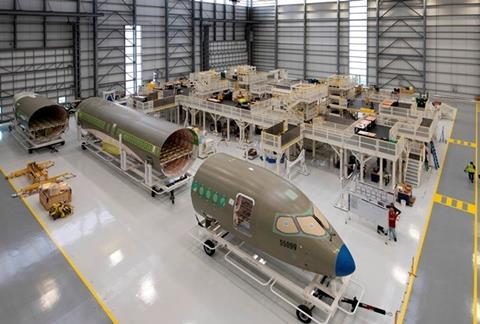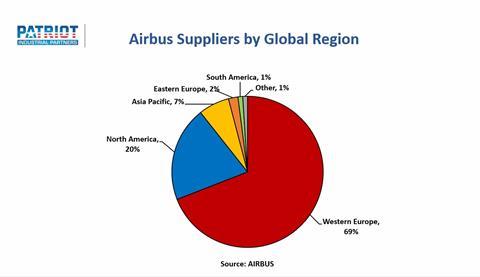Russia’s conflict with Ukraine, and the West’s quick economic response, should prompt aerospace executives to rethink their supply chain strategies.
The conflict, unsettling on so many levels, is already among the most significant to occur on European soil since World War II. But unlike other conflicts since, this event threatens broad global destabilisation due partly to the global nature of today’s supply chains. These days, regional warfare, political unrest and natural disasters can create instability that radiates outward with global consequences.
One ongoing example: shortages of automotive semiconductors, a result of factory fires and natural disasters, including deep freezes and droughts. Meanwhile, factors like rising oil prices, increased shipping demand and insufficient numbers of truck drivers have inflated freight costs and delayed delivery of goods.

True, global supply chains have plenty of benefit: they can help companies reduce costs, give them access to foreign government tax incentives and position them to land new overseas customers.
But, as recent events demonstrate, a global supply chain poses plenty of risk.
The aerospace supply chain is as complex and wide-ranging as they come. As such, it will not be immune to fallout from Russia’s conflict with Ukraine.
The conflict will likely spark a new supply challenge, this one impacting titanium, raw material and forgings sourced from Eastern Europe and Russia. According to a recent Morgan Stanley analysis, about one-third of Boeing’s titanium comes from Russia. Additionally, over two decades Boeing has developed strategic partnerships with Russian and Ukrainian companies. The agreements have involved aircraft design and research, and manufacturing facilities.
Global events are putting more pressure than ever on supply chains. The full degree to which Airbus, Boeing and suppliers will be impacted remains unseen.
Both aircraft manufacturers rely on global supply chains, though they have differing footprints in various regions – reflecting the location of production lines and each company’s appetite for supply risk.
The chart below provides a snapshot of Airbus’s approved supplier list, broken out by region. (Though it does not account for all the European airframer’s sub-tier suppliers, the chart does provide a general representation).

Airbus has a concentrated, European-based supply chain. That creates some challenges because Airbus produces aircraft in five countries: Canada, China, France, Germany and the United States.
Boeing, on the other hand, has three aircraft production facilities, all in the United States. Its supply chain depends more on long-distance global shipping to its US facilities.
Differences aside, global uncertainty leaves both companies open to supply risk. They must manage their chains amid geopolitical flashpoints, increased logistics complexity and growing middle classes in many of the world’s countries, a trend that will push up costs. Also, natural disasters – and of course pandemics – can force plant slowdowns and closures.
The years 2020 and 2021 were challenging due to reductions in demand and production. But 2022 presents new hurdles: to recover production amid financial pressures, global volatility and logistical issues. Also, Western sanctions against Russia – including those limiting Russian banks’ ability to use the Worldwide Interbank Financial Telecommunication (SWIFT) transaction system – seem sure to disrupt cash flow.
For those reasons, aerospace companies must act. Aircraft manufacturers and tier one suppliers must weight benefits and risks. They will need to revisit their long view of bringing capabilities back under, or closer to, company control, through vertical integration or by investing in regional suppliers that are closer to aircraft production facilities.
Strategic sourcing and supply chain leaders have been discussing global supply chain risks for years, and now is time to empower these leaders. Companies must ensure they have both the right make-buy strategy and the appropriate regionalised supply chain strategy.
In light of events in the past decade, dual sourcing, increased inventory and regionalisation may be the desired path to stability. Yes, such moves will increase costs. But the expense will yield supply chain resilience – and surety of that supply.
Alex Krutz is the managing director at Patriot Industrial Partners, an aerospace and defence advisory firm that focuses on manufacturing strategy, supply chain optimisation and value creation planning. Follow him on LinkedIn.


























